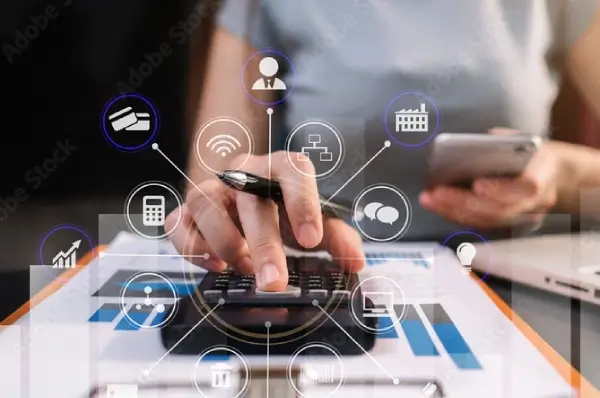Overview
Did you know that businesses spend an average of $16 to $22 to process a single paper invoice? That might not seem like much but for most organizations, that number can quickly add up to tens or even hundreds of thousands of dollars annually, just for inefficient invoice handling. For accountants managing a high volume of invoices, these outdated processes can feel like a constant uphill battle—unnecessary delays, frequent mistakes, and rising costs. But what if there was a way to not only reduce these expenses but also improve the accuracy and efficiency of your accounts payable process?
That’s where e-invoicing comes in. It puts you back in control of your invoicing—streamlining approvals, reducing errors, and simplifying compliance.
In this blog, we’ll explore seven key advantages of modernizing your accounts payable (AP) process with e-invoicing. These benefits aren’t just about staying up-to-date with technology; they’re practical solutions to real problems accountants face every day.
1. Reduced Errors and Manual Data Entry
Manual data entry is not only time-consuming but also highly prone to human error. A single incorrect digit or misplaced decimal can lead to major reconciliation issues and strained relationships with vendors.
E-invoicing eliminates the need for manual data entry by automatically extracting invoice data and ensuring that all required fields are populated correctly. This not only reduces the risk of errors but also ensures that invoices are processed consistently, helping to avoid delays caused by discrepancies. By automating the data entry process, accountants can focus on more strategic tasks rather than getting bogged down by tedious manual work.
2. Faster Processing Times
Paper-based invoicing and emailed PDFs often lead to delays as invoices sit in inboxes or on desks, waiting to be manually processed. This slows payments and disrupts cash flow.
E-invoicing processes invoices electronically in real-time, removing the need for manual handling and speeding up the entire workflow. They can be automatically routed to the right person or department for approval, cutting down on bottlenecks that typically occur when invoices are passed from one person to another. Faster processing means businesses can take advantage of early payment discounts and improve relationships with suppliers by paying on time.
3. Enhanced Compliance and Auditability
Staying compliant with tax regulations and preparing for audits is a challenge, especially when invoices are scattered across different systems or stored in physical formats. Finding and retrieving the right documents can be time-consuming, and errors in tax compliance can result in penalties.
E-invoicing stores invoices in a standardized, easily accessible digital format with a clear audit trail—tracking when each invoice was received, approved, and paid. This traceability simplifies compliance, making audits smoother and reducing the risk of penalties for missing or inaccurate documentation. By modernizing AP process, accountants can streamline tax reporting and quickly access the information needed for returns or audits.
4.Improved Visibility and Control Over AP Processes
Lack of transparency in the AP process often leaves accountants scrambling to figure out the status of invoices, which can result in late payments, missed opportunities for early payment discounts, and difficulties managing cash flow.
E-invoicing offers real-time visibility into the entire AP process, allowing finance teams to track invoices from receipt to payment. This transparency helps manage cash flow, prioritize payments, and negotiate better terms with suppliers. Accountants can quickly spot bottlenecks and address issues before they become major problems.
5. Cost Savings
Manual AP process often incurs hidden costs, such as printing, mailing, and storage of paper invoices, not to mention the labor hours spent on manually processing and correcting errors.
E-invoicing cuts down on these unnecessary costs. By eliminating paper invoices, businesses can save on printing, postage, and storage costs. More importantly, the automation involved in e-invoicing reduces the amount of time employees spend on manual tasks, allowing them to focus on higher-value work. The financial savings from faster processing times, reduced errors, and streamlined workflows can significantly impact the bottom line.
6. Sustainability
Manual invoicing processes contribute to paper waste and increased carbon footprints. Traditional paper invoices require printing, mailing, and storing, all of which have an environmental impact.
E-invoicing, on the other hand, significantly reduces paper usage and lowers carbon emissions by digitizing the entire invoicing process. By switching to e-invoicing, businesses can contribute to sustainability efforts while improving efficiency. This not only supports a greener environment but also helps companies align with sustainability goals, enhancing their reputation among stakeholders.
7. Scalability
As businesses grow, their AP processes can become increasingly complex. Managing a larger volume of invoices manually can overwhelm finance teams and result in more errors, delayed payments, and inefficiencies.
E-invoicing scales with your business, effortlessly handling increasing invoice volumes without overloading your finance team. Automated workflows maintain high efficiency and accuracy as your workload grows, allowing your business to focus on expansion without worrying about bottlenecks. By upfrading your AP process now, you’re setting up your business for future growth, ensuring your finance team stays efficient no matter how large the company becomes.

Conclusion
Adopting e-invoicing brings significant benefits that address many of the challenges accountants face daily—from reducing errors and speeding up invoice processing to improving compliance and saving costs. Modernizing your AP process not only leads to greater operational efficiency but also provides your finance team with the transparency they need to make smarter financial decisions.
Smartbooqing offers a powerful e-invoicing solution that helps you streamline your AP workflows from start to finish. By integrating with your existing systems, Smartbooqing automates the entire invoicing process—reducing manual work, improving accuracy, and giving you real-time insights into your financial operations. With Smartbooqing, accountants can take control of their AP process, minimize errors, and focus on driving more value for their organization.
Modernizing your AP process with Smartbooqing is not just about improving efficiency today; it’s about future-proofing your business for continued growth and success.



